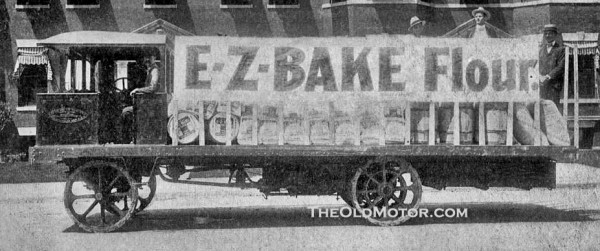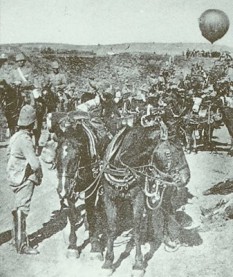School Meals, Milk and vitamen supplements (or at least Cod Liver Oil) are doable to improve the health of future recruits (and mothers) if the political will is there to do it.
Last edited:
excepting every single Soviet MG that used the 54R cartridgeSee MG-34 and every NATO machine gun designed since WW2
How did that go IOTL?Ok, then they'll have to use couriers for communication wherever possible.
Most messages got through to the right place, and most got through in the expected time. However inevitably some messengers got lost, some got wounded and some got killed. Couriers work, and if a message isn't time critical and/or is highly sensitive even today they can be the best option.

I'd seriously question if most messages actually got through. Runners had the highest casualty rates of the war.Of all the jobs in the infantry, “the runner’s job was the hardest and most dangerous,” World War I veteran Lt. Allan L. Dexter observed in a 1931 newspaper article. “With a runner, it was merely a question of how long he would last before being wounded or killed.”
Because even the short journeys were so risky, often multiple runners were sent out. As Sgt. Alexander McClintock, an American who served with Canadian forces in France, said in a 1918 newspaper account, “It is the rule to dispatch two or three or three runners by different routes, so that one at least will be certain to arrive.”
Without such redundancy, disaster could result. McClintock described an assault on a German position in which an officer assumed that sending one runner with a message about last-minute change of plans would do. But after that man was killed by a German bullet, his message went undelivered, and as a result, a battalion attacked the Germans without barrage fire to protect them. Some 600 men were killed or wounded in a few minutes. “Several officers were court-martialed as a result of this terrible blunder,” McClintock wrote.
Those who volunteered for the job of runner were regarded with great respect by others who served. As Elton Mackin wrote in his memoir Suddenly We Didn’t Want to Die: Memoirs of a World War I Marine, “A fellow didn’t have to take a runner’s job. All a fellow had to do was say no. Except in a pinch, when there was neither time nor choice, no one served as a runner except a volunteer, for many vital things depended upon the men carrying the messages.”
Better than radios, with the use of RDF. Every radio and telegraph/telephone station would immediately be triangulated and destroyed by artillery or airpower as soon as it was used, probably destroying the artillery batteries or headquarters they were at in the process. Communication would quickly revert to things like couriers, except the side not so dependent on radio/telegraph would be better adapted to this (and probably wouldn't have lost most of its artillery and HQs to strikes before learning).How did that go IOTL?
Sure, not that radios were in much use for the reason of technological limitations and of course the availability of land lines. Couriers could work if you're willing to tolerate high losses and constantly send out at least 3 to be sure the message gets through...though even then it is likely it will be late in arriving.Better than radios, with the use of RDF. Every radio and telegraph/telephone station would immediately be triangulated and destroyed by artillery or airpower as soon as it was used, probably destroying the artillery batteries or headquarters they were at in the process. Communication would quickly revert to things like couriers, except the side not so dependent on radio/telegraph would be better adapted to this (and probably wouldn't have lost most of its artillery and HQs to strikes before learning).
That's still better than the near-guaranteed death of every radio and telegraph operator near the front lines (and probably the HQ and artillery staff that are with them).Sure, not that radios were in much use for the reason of technological limitations and of course the availability of land lines. Couriers could work if you're willing to tolerate high losses and constantly send out at least 3 to be sure the message gets through...though even then it is likely it will be late in arriving.
But the Germans, Austro-Hungarians, and Russians did come to that conclusion anyways.On indirect fire. A gun/howitzer seems obvious. Its not. QF artillery is very new and getting a gun in now is probably more important than designing a gun/howitzer, which is two distinct roles. Especially as the gun is not the weapon the shell is, and at the time shrapnel intended to suppress enemy riflemen not HE intended to blow things up. Think humungous shotgun round going off short of the position and blasting a few hundred rounds of ball cartridge forward, several times a minute.
Indirect HE is even more problematic. Noone really knows all the issues involved in accurate fire yet but you have to have line of sight to the target and from the observer to the gun position unless you have the time to lay a cable from the gun to the FOO, as he will be signalling with flags or heliograph. Very easy to do with a siege, or trench warfare not so easy in a mobile war. Because the German planning has to assume they will be forced to attack Belgian, French or Russian pre war fixed positions which can be mapped in peacetime and will not move it makes sense to carry around howitzers. For the Brits, no such certainty.
6.5 Tons not enough? September 1902 'The Horseless Age'In 1902 however there are no viable lorries.

So realistically this can be summed up as "Just listen to Field Marshal Roberts"?
Note the comments of the Boer soldier at the end.In 1902 however there are no viable lorries. Nor are there viable aircraft.

6.5 Tons not enough? September 1902 'The Horseless Age'
Pretty steep requirement for the era, if they included refueling as 'maintenance'. It had to run for 48 hours without need for maintenance or cleaning.